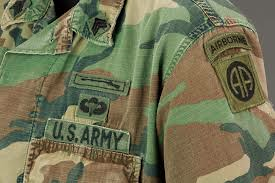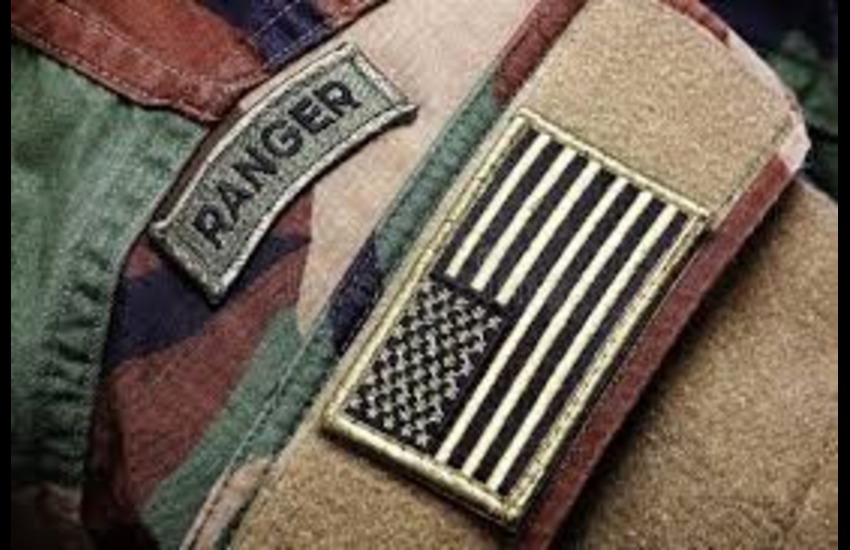BDU patches are emblems worn on a ‘Battle Dress Uniform’ to identify the wearer’s rank, name, unit, and branch of service. So, whether the soldier belonged to the infantry division, cavalry regiment, or any other unit, he was supposed to attach it to his uniform.
Now, speaking of placement, know that you cannot just stick the emblems anywhere you want. Each one has a designated spot, and getting it wrong can mean violating uniform regulations.
Wait, you don’t know? No worries. This guide breaks down the essential rules every soldier should know. From standard placements to common mistakes, the blog talks about everything. Come on, let’s get it right.
BDU Patch Placement Instructions for Every Soldier

BDU stands for Battle Dress Uniform, which is a type of camouflage uniform. It is a complete set of military clothing intended to offer soldiers maximum protection and comfort during active duty and combat missions. Patches associated with this outfit were incredible, and similar ones were available to order at online sew on patches services for the general public.
Breaking Down the BDU Patch’s Look
To begin with, the name tape on a Battle Dress Uniform was supposed to be sewn or attached directly above the right chest pocket. It was also instructed to be centered and aligned horizontally according to the branch’s uniform guidelines. This placement would help in clearly identifying the soldier who wore the uniform.
Furthermore, it is important to understand that placement can vary slightly between branches like the Army, Navy, Air Force, and Marines. Each has its own regulations for where to place name tapes, rank insignia, unit patches, and flags. Hence, you must always refer to your specific branch’s manual to ensure the correct position.
Checking Whether You Placed It Right or Not
Conflicts are common. They can happen anywhere, which is why you need to check the branch’s official guide. This is the first step of having a regulation-approved badge placed in the perfect spot. So, as you go through the guidebook, it will show you exactly where each patch should go, down to the inch.
However, if you are still unsure, you must ask a senior NCO or someone experienced to double-check it for you. They will spot mistakes quickly and help you fix them. Also, don’t just check after the order is delivered. In order to avoid any slipups in the position or text, you need to get the designs checked, too. Only then buy embroidery patches in bulk.
Tools & Techniques to Help with Accurate Positioning
If you want to master the art of placing this military patch, then here are some of the very important instructions that are compulsory to follow.
- Use official uniform guides
You should refer to the approved regulation manual (like AR 670-1 for the Army) to know the exact patch positions. Do not play around. It is serious business.
- Measure carefully
Try to be as precise as possible and use a measuring tool to ensure badges are evenly spaced out. You also need to take care of proper alignment.
- Lay the uniform flat
Start by placing the Battle Dress Uniform on a smooth surface to avoid wrinkles or uneven placement. Then, measure everything nicely and mark the correct positions. Accuracy is crucial.
- Use templates or stencils
After measuring the appropriate distances between the badges, you will need markers, templates, or stencils to mark the spots. This way, you can work on attaching each badge individually, without losing track.
- Ask experienced personnel
When the accurate arrangement of custom military patches is in question, you can trust your seniors. For instance, senior NCOs or uniform specialists can guide you. They have done it countless times.
- Avoid guessing
It is common sense that guesswork may or may not lead to mistakes. So, do not hurry. Take your time and be exact. This is your chance to impress the authorities with your commitment.
- Keep patches clean and secure
It is your job to regularly check for loose threads or misaligned Velcro because if a senior finds out, the consequences can be worse.
Recent Updates in the Arrangement Rules
There have been updates to BDU patch placement rules in recent years, especially within the U.S. Army. One major change requires the garrison personnel to wear the shoulder sleeve insignia of their installation’s senior commander, rather than their previous command.
This update was introduced to strengthen unit identity. It was also helpful in effortlessly making decisions and improving operational clarity. Furthermore, it would now reflect a shift in how responsibilities are managed at the base level, giving more authority to local commanders.
FAQs
They are required to go to specific spots on the shirt. For example, name tape above the right chest, branch tape above the left, rank centered, and unit patch on the left shoulder. The instructions are clear and should be followed strictly.
On the Operational Camouflage Pattern uniform (OCP), the U.S. flag patch is worn on the right shoulder. It is attached using Velcro, with the stars facing forward to symbolize moving into battle, and not retreating.
Morale badges are allowed in some settings, like deployed environments or training, but not on official duty uniforms. Hence, always check your unit’s rules because some commanders allow them casually while others may not.
Yes, incorrect placement can lead to uniform violations. You might get counseled, asked to fix it, or face disciplinary action depending on the situation. Therefore, it is best to follow the rules and maintain professionalism.
The Final Words on BDU Patch Placement
Understanding the arrangement of these precious badges isn’t complicated at all. But it does require thorough attention to detail. This is necessary because each patch has a purpose, and where it sits on your uniform matters.
So, whether you are new to military standards or just need a refresher, knowing the correct placement helps you stay regulation-ready. It also helps you avoid unnecessary corrections or consequences. Simply put, it is more than just about being correct. It’s about respecting the uniform, showing, and demonstrating discipline.
